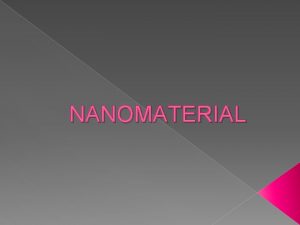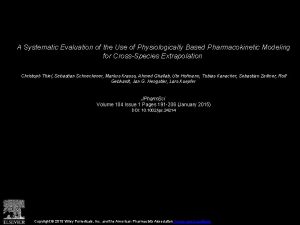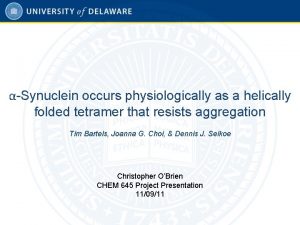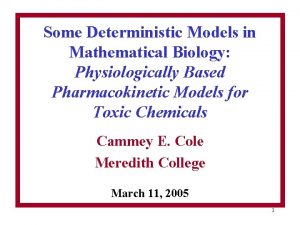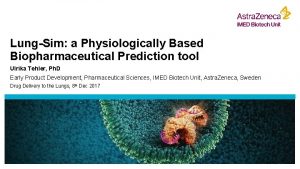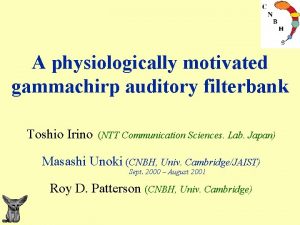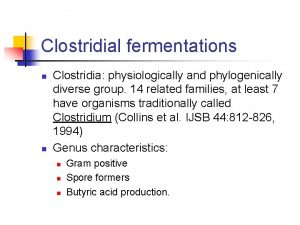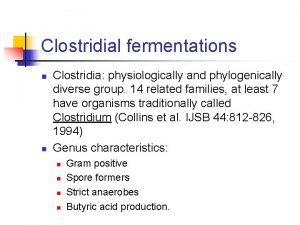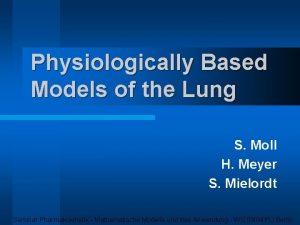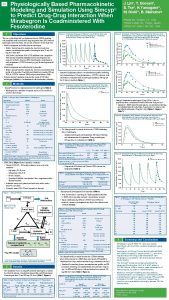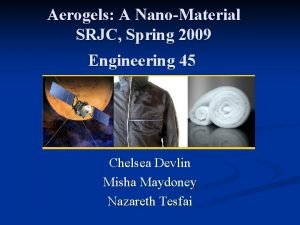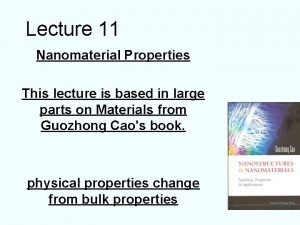THE NEED FOR NANOMATERIAL EVALUATION IN A PHYSIOLOGICALLY





















- Slides: 21

THE NEED FOR NANOMATERIAL EVALUATION IN A PHYSIOLOGICALLY RELEVANT MODEL: CONNECTING ENVIRONMENTAL VARIABLES AND NM BEHAVIOR TO TOXICOLOGICAL RESPONSES Kristen K. Comfort Department of Chemical and Materials Engineering University of Dayton

DEFINING THE NANOBIO INTERFACE Nano-Bio interface = dynamic physicochemical interactions, kinetics, and thermodynamic exchanges between nanomaterials (NM) surfaces and biological components Influenced By: Determines:

MOTIVATION • Tremendous advances have been made in NM characterization, synthesis, and dosimetry • Parallel progress in biological models needs to be developed and implemented • Long term goals: • Generate in vitro models that mimic an in vivo system • Improve predictive modeling of NM-behavior and bioresponses • Design accurate, high-throughput in vitro systems

IN VITRO VS IN VIVO SYSTEMS in vitro in vivo Advantages: • Simplified model • Lower cost • Rapid assessment/ High-throughput capabilities • Can explore mechanistic response • Cell line specificity • Complete physiological response Inclusion of immune/inflammatory systems • Disadvantages: • Difficult to extrapolate to human system • Applicability is dependent on design Ethical concerns – Europe is phasing out • High cost • Time requirements • Dosimetry and distribution concerns • Difficult to puzzle out NM mechanisms

IN VITRO VS IN VIVO SYSTEMS • in vitro • in vivo Current Limitation: Poor correlation Need to improve in vitro models to bridge this gap

LET’S EXAMINE A TISSUE/ORGAN SYSTEM • What are its unique characteristics? 1) 3 -Dimensional

LET’S EXAMINE A TISSUE/ORGAN SYSTEM • What are its unique characteristics? 1) 3 -Dimensional 2) Comprised of multiple cell types • (hepatocytes, endothelial, Kupffer)

LET’S EXAMINE A TISSUE/ORGAN SYSTEM • What are its unique characteristics? 1) 3 -Dimensional 2) Comprised of multiple cell types • (hepatocytes, endothelial, Kupffer) 3) Physiological fluid • Interstitial fluid or secreted bile

LET’S EXAMINE A TISSUE/ORGAN SYSTEM • What are its unique characteristics? 1) 3 -Dimensional 2) Comprised of multiple cell types • (hepatocytes, endothelial, Kupffer) 3) Physiological fluid • Interstitial fluid or secreted bile 4) Dynamic environment • Connected to the CVS

PRIMARY GOALS… (1) To transform this: Into something that is more representative of: (2) Which will lead to augmented in vitro applicability: Increased Correlation & Predictive Modeling

EXPERIMENTAL RESULTS

STUDY APPROACH • Target system: Alveolar region • Model contains: • Human alveolar epithelial cells • Artificial alveolar fluid (AAF) • Dynamic movement • 60 nm tannic acid gold nanoparticles (Au. NPs) • Characterize • Evaluate nano-bio interface

DYNAMIC FLOW • Introduced to the cell culture system through use of a peristaltic pump • Tubing was inserted into lid of 24 well plate • Each well was singularly connected, producing unilateral flow across the surface • Target volumetric flow rate was selected: • Velocity in tubing = 0. 2 cm/s (capillary rate) • Velocity across cells = 0. 003 cm/s (diffusion-based rate)

ENVIRONMENTAL INFLUENCE ON CELL MORPHOLOGY A 549 cells cultured with: (A) Media, static (B) AAF, static (C) Media, dynamic (D) AAF, dynamic Conclusions: • Dynamic flow induced elongation • AAF causes curvature • BOTH are seen in vivo

AUNP CHARACTERIZATION Primary size (nm) 65. 1 ± 5. 3 Agglomerate size (nm) 74. 8 ± 4. 6 Zeta potential (m. V) -31. 8 ± 0. 9 Ionic dissolution (%) 0. 8 ± 0. 5

AUNP CHARACTERIZATION Conclusions: Exposure to AAF significantly altered Au. NP properties and behavior.

AUNP DEPOSITION • Deposition = percentage of administered NPs that are bound to the cell surface or internalized • The deposited dose has been strongly correlated to cytotoxicity Conclusions: In media: dynamic flow reduces deposition In AAF: deposition is unchanged due to sedimentation of large agglomerates

AUNP INTERNALIZATION • TEM images of (A) Media, static (B) AAF, static (C) Media, dynamic (D) AAF, dynamic Conclusions: • Increased Au. NP number with AAF • AAF/dynamic – no internalization

NANO-BIO INTERFACE Conclusions: • Cells maintained altered morphology • Increased Au. NP number with AAF

TAKE AWAY MESSAGE • It is possible to modify traditional in vitro systems to more closely mimic in vivo models • We introduced dynamic flow and biological fluids • NP characteristics and behavior are strongly dependent upon the surrounding environment • This has been linked to bioresponses • Therefore, modified in vitro systems allow for identification of novel responses previously unobtainable. • Bridging the in vitro – in vivo gap

THANK YOU
 Nanomaterial adalah
Nanomaterial adalah Formel för lufttryck
Formel för lufttryck Vilket tal pekar pilen på
Vilket tal pekar pilen på Elektronik för barn
Elektronik för barn Borra hål för knoppar
Borra hål för knoppar Smärtskolan kunskap för livet
Smärtskolan kunskap för livet Bris för vuxna
Bris för vuxna Mat för unga idrottare
Mat för unga idrottare Anatomi organ reproduksi
Anatomi organ reproduksi Trög för kemist
Trög för kemist Teckenspråk minoritetsspråk argument
Teckenspråk minoritetsspråk argument Etik och ledarskap etisk kod för chefer
Etik och ledarskap etisk kod för chefer Typiska drag för en novell
Typiska drag för en novell Ellika andolf
Ellika andolf Steg för steg rita
Steg för steg rita Toppslätskivling dos
Toppslätskivling dos Debattartikel mall
Debattartikel mall Redogör för vad psykologi är
Redogör för vad psykologi är Bästa kameran för astrofoto
Bästa kameran för astrofoto En lathund för arbete med kontinuitetshantering
En lathund för arbete med kontinuitetshantering Geometri för barn
Geometri för barn Offentlig förvaltning
Offentlig förvaltning
